I let the user select two points that define a horizontal or vertical focus line, as per the user's specification. The user must also specify how the half-width of the focus area. Once the focus line and half-width of the focus area is specified, I create a mask for the focus region. I blur the entire image, except for the masked region, using a Gaussian Filter, with the standard deviation of the Gaussian kernel being specified by the user. Then, I repeatedly increase the half-width of the mask by 0.5 * previous half-width of the mask, scaled the standard deviation of the Gaussian kernel by a factor of 1.1 each time, and blured the image with the new Gaussian Filter with the increased standard deviation. I carried this process out till the mask covered the entire image. Repeatedly increasing the size of the mask and the the standard deviation of the Gaussian kernel repeatedly helps create the effect of regions farther away from the original mask appearing more blurred.
I then increased the saturation of my fake miniaturized image by a factor of 1.5, to increase the illusion of a miniature.
I applied these fake miniatures approach on some photos I've taken in the past.
 Hills at Point Reyes (Summer 2018)
Hills at Point Reyes (Summer 2018) 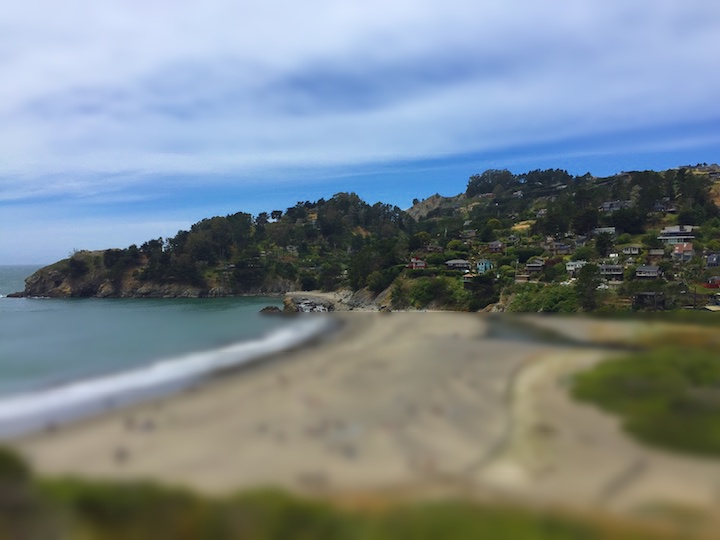 Fake Miniature
Fake Miniature I set the half-width of my mask to be 80 pixels, and the initial standard deviation of the Gaussian kernel to be 2 for the result above.
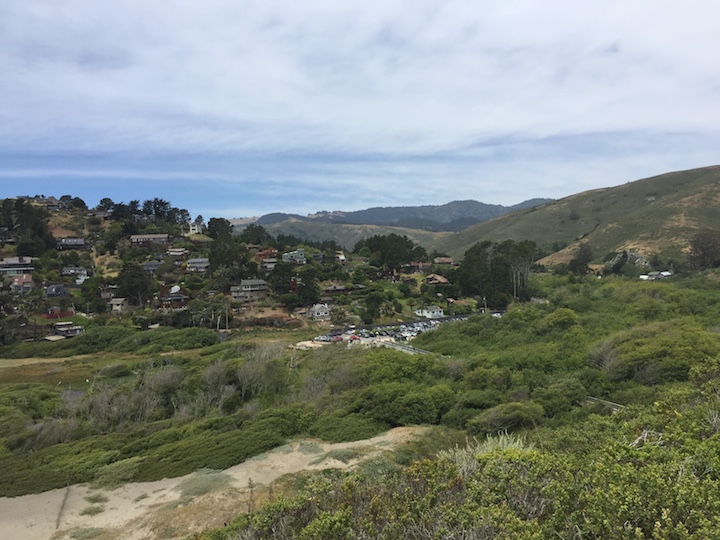 Another picture of Hills at Point Reyes (Summer 2018)
Another picture of Hills at Point Reyes (Summer 2018) 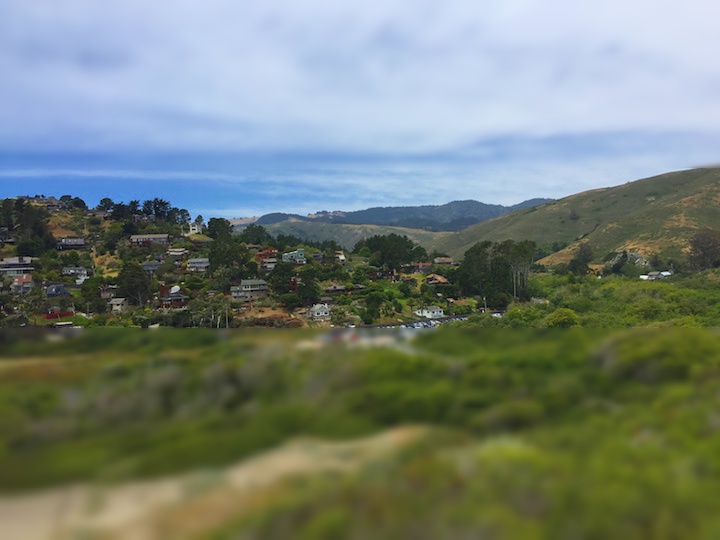 Fake Miniature
Fake Miniature I set the half-width of my mask to be 100 pixels, and the initial standard deviation of the Gaussian kernel to be 1.8 for the result above.
 Hoover Tower at Stanford University (Summer 2017)
Hoover Tower at Stanford University (Summer 2017) 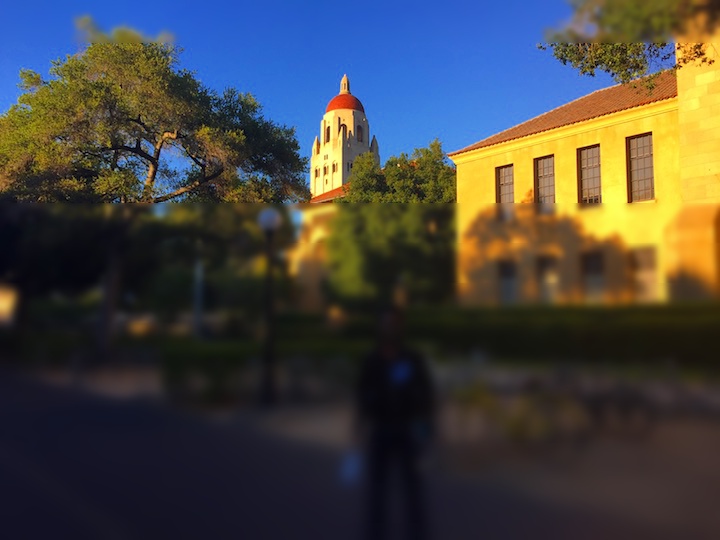 Fake Miniature
Fake Miniature I set the half-width of my mask to be 80 pixels, and the initial standard deviation of the Gaussian kernel to be 1.8 for the result above.
 Evans Hall (Fall 2018)
Evans Hall (Fall 2018) 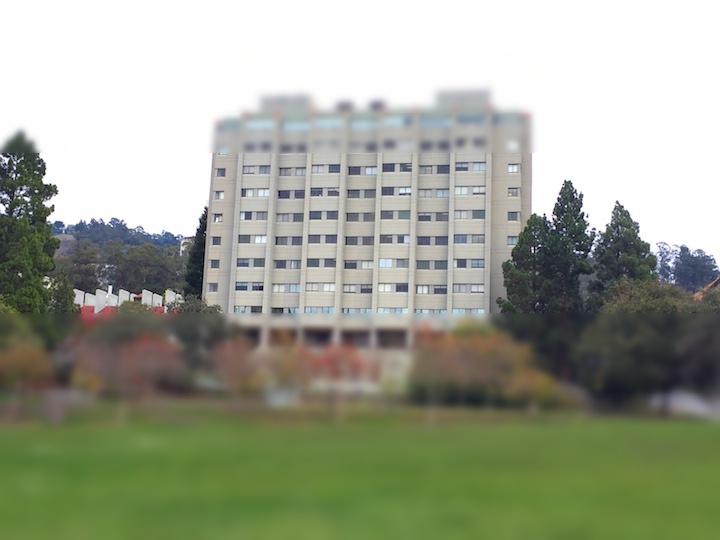 Fake Miniature
Fake Miniature I set the half-width of my mask to be 80 pixels, and the initial standard deviation of the Gaussian kernel to be 2 for the result above.
An example with a vertical focus line:
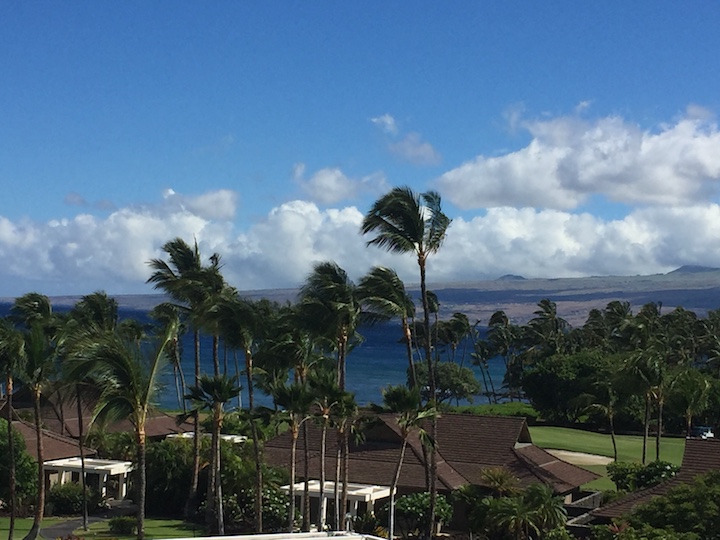 Palm Trees Outside my Hotel Room in Hawaii (Summer 2016)
Palm Trees Outside my Hotel Room in Hawaii (Summer 2016) Fake Miniature
Fake Miniature I set the half-width of my mask to be 60 pixels, and the initial standard deviation of the Gaussian kernel to be 1.5 for the result above.
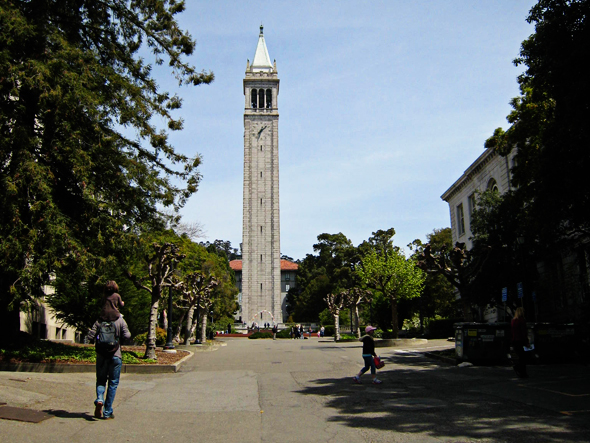 Campanile
Campanile 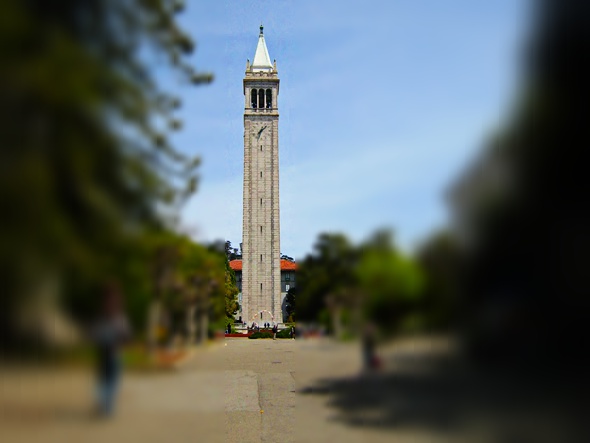 Fake Miniature
Fake Miniature I set the half-width of my mask to be 35 pixels, and the initial standard deviation of the Gaussian kernel to be 1.5 for the result above.
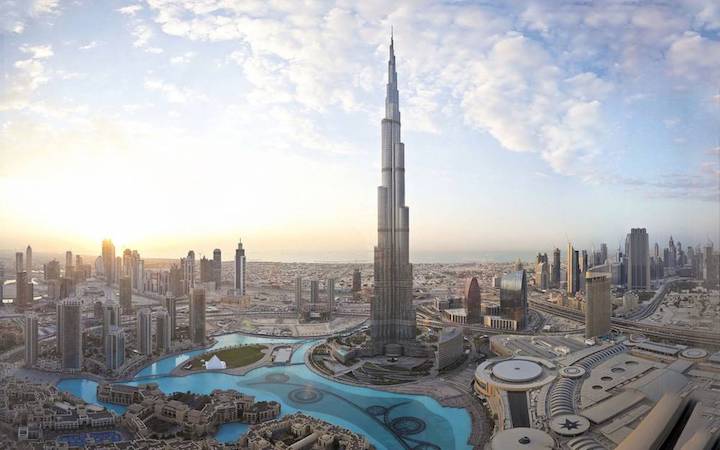 Burj Khalifa
Burj Khalifa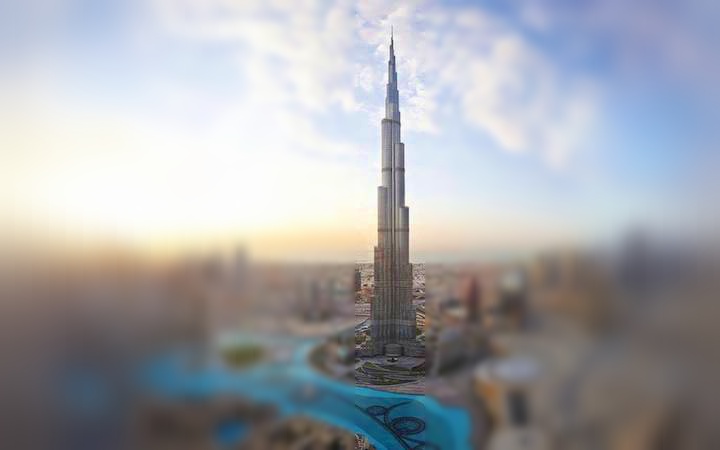 Fake Miniature
Fake Miniature I set the half-width of my mask to be 35 pixels, and the initial standard deviation of the Gaussian kernel to be 1.5 for the result above.
I defined a complex mask, using user input. I used the starter code provided by Nikhil Uday Shinde for Project 3 this semester for creating the complex mask based on user input.
As before, I repeatedly increased the size of the complex mask and blurred the image with a Gaussian filter with increasing standard deviation for each repetition. I increased the size of the mask by taking the distance between each user-specified point on the boundary and the center of the mask, and pushing the points on the boundary outwards by a factor of 0.3 of this distance for each repetition. As before, I carried this process out till the mask covered the entire image. I then increased the saturation of my fake miniaturized image by a factor of 1.5, to increase the illusion of a miniature.
To improve the effect, I also used a cross-bilateral filter, which I applied to the mask. I applied this filter to the mask every time it was re-sized, and before the Gaussian blur took place.
The results can be seen below:
 Gateway of India
Gateway of India 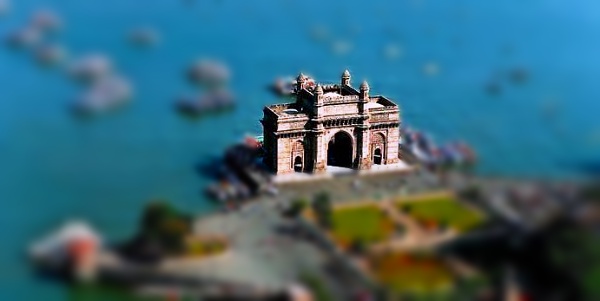 Fake Miniature
Fake Miniature 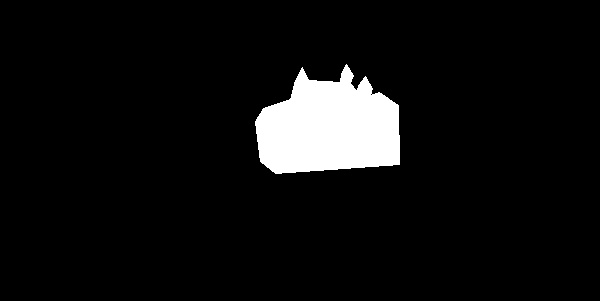
I went to Stanley Hall to capture some images of a road near Pimentel Hall from a vantage point.
For this project, I re-created the dolly zoom effect. I took 3 sets of vertigo shots. For each set of shots, I moved behind, while increasing the zoom of the camera each time I went behind, such that the object remained the same size. I noticed that doing this led to the field of view of the camera decreasing every time I moved backward and increased the zoom. I used a Nikon D3400 camera, which is a DSLR, to capture the images.

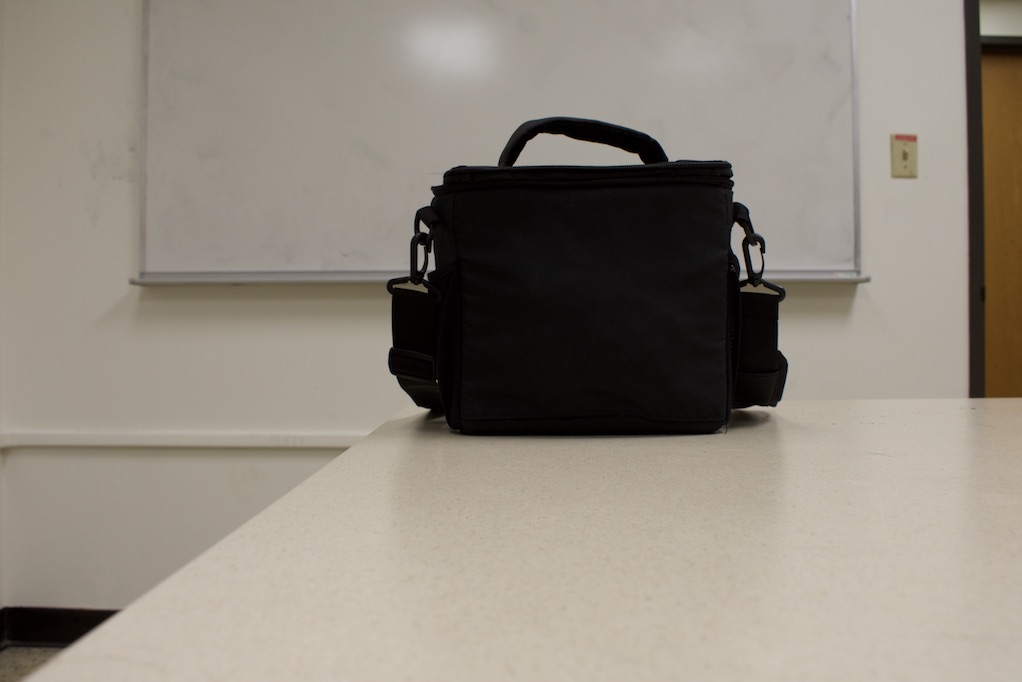
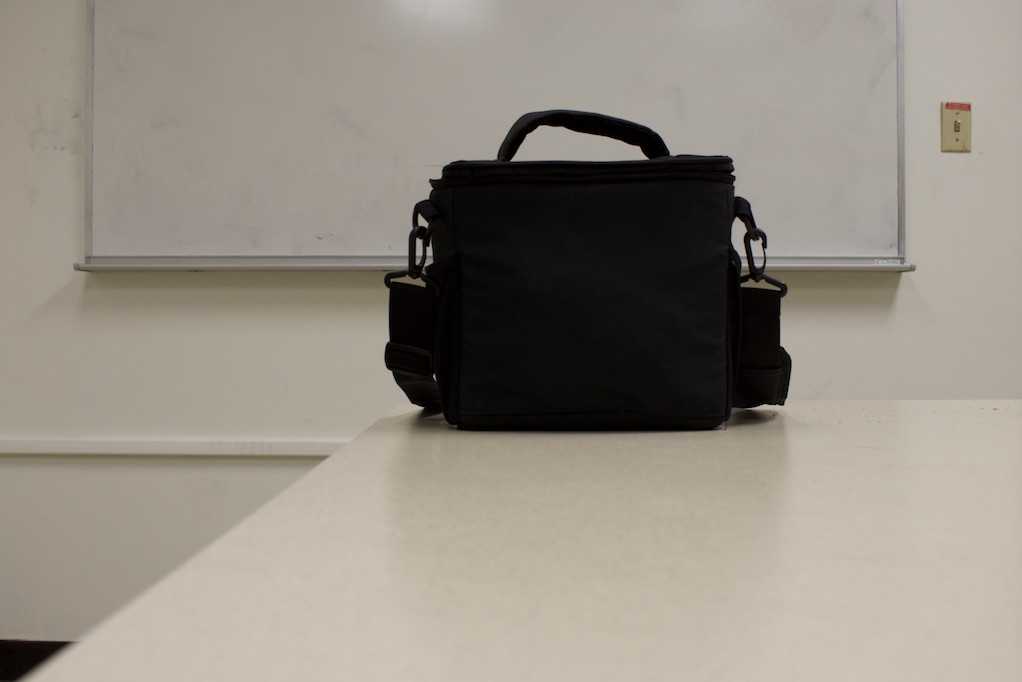
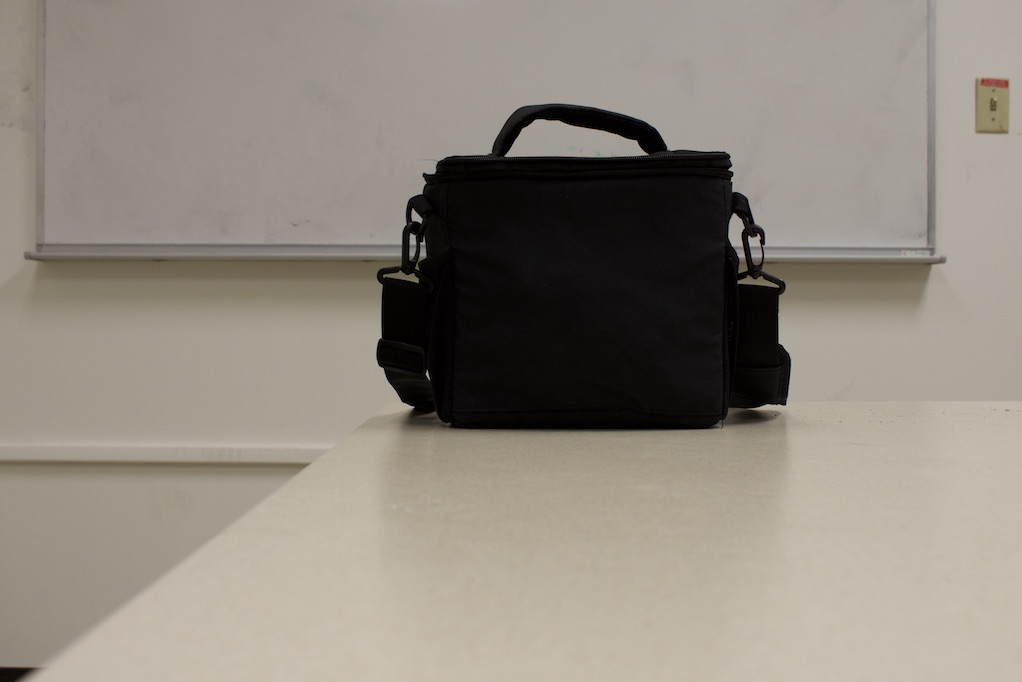








I created animated sequences for my vertigo shot, and made them into the form of a GIF.
I calculated the Field of View of my camera at maximum zoom and minimum zoom respectively. Field of View is a measure of how wide a region a camera can capture while creating an image.
I computed the Field of View at maximum and minimum zoom for the second vertigo shot I captured. In order to compute the field of view at a given zoom, I needed two measurements: the distance from the camera to the object in focus (let's call this f), and the width of the object in focus (let's call this d). The field of view is then given by arctan(d/2f).
The width of the bag was 9.5 inches
At Minimum Zoom, the distance between the camera and the bag was 20 inches. This gave a FOV of arctan(9.5/(2 * 20)) = 13.36 degrees
At Maximum Zoom, the distance between the camera and the bag was 29 inches. This gave a FOV of arctan(9.5/(2 * 29)) = 9.30 degrees
It was really cool creating fake miniatures and vertigo shots, and I learned how to create awesome illusions with math and code, as well as clever capturing of photographs. Over all, this class was very insightful and a great learning experience.